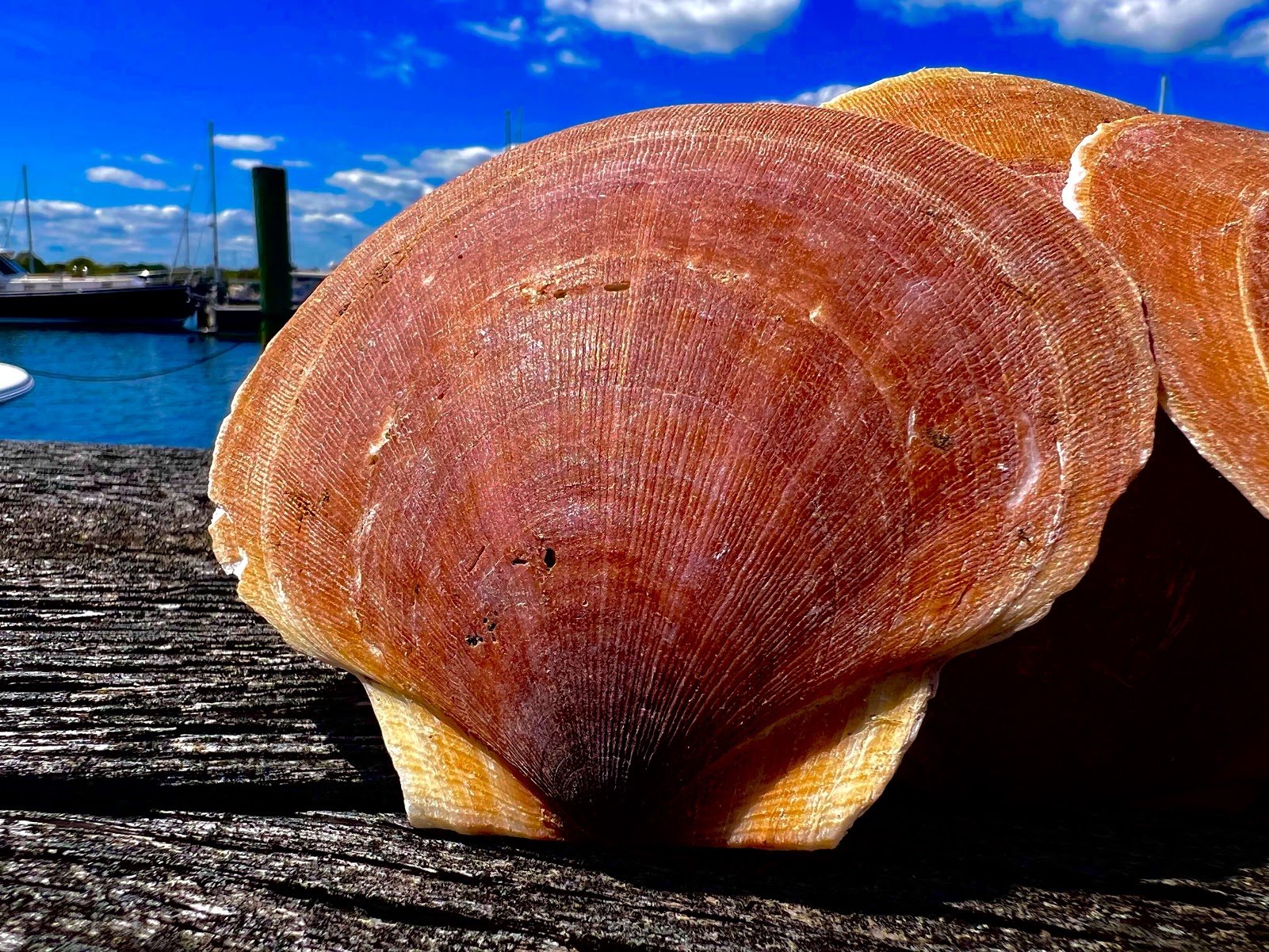Looking to buy our scallops? Buy our freshest, dry frozen Stonington Scallops exclusively at The Ditty Bag Market & Cafe, 7 Roosevelt Ave. Mystic, Connecticut
Sea scallopS
The primary Atlantic sea scallop fishery operates along the Atlantic coast from the Mid-Atlantic to the US/Canada border. The scallop fishery uses predominantly paired or single scallop rakes throughout the entire range of the fishery. To a lesser extent, and mainly in the Mid-Atlantic region, the scallop fishery uses trawl gear. Most vessels land scallops as shucked meats (the adductor muscle) but some vessels also land whole (in-shell) scallops. U.S. wild-caught Atlantic sea scallop is a smart seafood choice because it is sustainably managed and responsibly harvested under U.S. regulations. Implementing regulations are found at 50 CFR part 648 subpart D.
POPULATION STATUS
According to the 2020 stock assessment, Atlantic sea scallops are not overfished and are not subject to overfishing.
APPEARANCE
Scallops are bivalves (having two shells), like clams and oysters.
The shells are held together by the adductor muscle (the part of the scallop Americans typically eat).
The upper shell is usually reddish-pink or brown in color. The lower shell is white or cream.
A small percentage (5-10 percent) of sea scallops are albinos, with white upper and lower shells.
Sea scallop shells are smooth and lack the prominent ribbing that is characteristic of most other scallop shells. It is thought that the sea scallop’s smooth shell is an adaptation to allow it to propel itself faster and farther.
BIOLOGY
Sea scallops can live up to 20 years. They grow quickly for the first few years of their life.
The largest scallop ever reported was about 9 inches in shell height, but they typically don’t grow larger than 6 inches.
Sea scallops can reproduce by age 2, but don’t produce many eggs or sperm until they are about 4 years old.
They are very fertile—a female sea scallop can produce hundreds of millions of eggs per year. For this reason, scallops may respond more rapidly to management actions than species that reproduce slowly and in small numbers.
Sea scallops usually spawn in late summer or early fall. They also may spawn in the spring, especially in the Mid-Atlantic Bight.
After hatching, scallop larvae remain in the water column for 4 to 6 weeks before settling on the ocean floor.
Sea scallops feed by filtering phytoplankton or other small organisms out of the water column, which can actually help to improve water quality by removing suspended materials.
Many kinds of pelagic fish and invertebrates eat scallop larvae.
Cod, wolffish, eelpout, flounder, crabs, lobster, sea turtles, and sea stars feed on juvenile and adult scallops.
Using its adductor muscle to snap its top and bottom shells open and shut, a sea scallop can propel itself through the water. This helps them escape predators, such as sea stars, that other bivalves like mussels, clams, and oysters can’t avoid.
WHERE THEY LIVE
Atlantic sea scallops are found in the Northwest Atlantic Ocean, from Newfoundland to Cape Hatteras, North Carolina.
Source: NOAA

